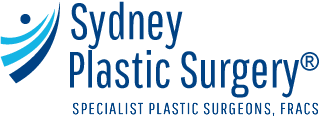Biceps/Triceps implants
A cosmetic plastic surgery procedure that enhances muscular appearance and improve fullness in the upper arm. This procedure is helpful for patients who have nerve injury, muscle injury, tendon injury or were born with a congenital abnormality
Enhancement can be achieved by either fat injection or silicone implants. Two types of silicone implants are available for biceps and triceps: soft silicone implants and hard silicone implants.
Bicep and Tricep Enhancement
Before After Photos
Planning your Biceps/Triceps implants
The Consultation
The surgeon will take a full history to ensure you are a good candidate for the procedure. Then, a full examination, including measurements of the length and width of the muscles and the circumference of the arms, will be recorded. Any asymmetry will also be brought to the patient’s attention. Options of surgery, including fat transfer and silicone implants, will be discussed. Implants will be tried on to ensure they suit the patient’s body.
The Surgery
In the case of fat transplants, it is most common for the fat cells to be taken from the patient’s buttocks, stomach or thighs. This is usually performed by liposuction. After this process has been carried out, the surgeon will subsequently process and purify the cells, before injecting them into their new position in the body. Because it is most probable that up to 50% of all the transferred cells will not survive for longer than a few months, the surgeon will ‘overfill’ the relevant area. If the area requires 20mls of fat, the surgeon will fill 30-40mls, allowing for the loss.
Your fatty cells are the best living filler, it is totally biocompatible and non-allergenic.
The biceps and triceps implant procedures can be performed under a general anaesthetic or local anaesthetics with twilight sedation. Bicep and triceps implants generally follow a similar pattern: an incision is made in a fairly inconspicuous position on the upper arm or armpit.
The surgeon can then shape a ‘pocket’ into which the implant is inserted and carefully positioned, inside a soft tissue area of muscle and fat. A minimal dressing is placed, and the patient can typically see the changes immediately after surgery.
Apart from the usual possible side effects of surgical procedures, there is a slight risk of asymmetry, nerve damage in the form of numbness (usually temporary) and implant shifting.
After Surgery
During recovery, the patient is instructed not to lift their arms for two days after surgery. Dressings are then removed, followed by a gentle exercise program within 1-2 weeks to enable a full and comfortable range of motion of the arms.
What are the risks associated with this procedure?
Plastic surgery, like any surgical procedure, carries inherent risks and potential complications.
Please read our Risks and Complications of Plastic Surgery page.
Getting you back to work and normal activities
Generally, physical use of the upper body muscles may be resumed within a week or two, and full muscular activity can be recommenced within one month.
Call us on free phone 1300 002 006 if you are outside Sydney or 9561 0222 if you’re in the Sydney area
